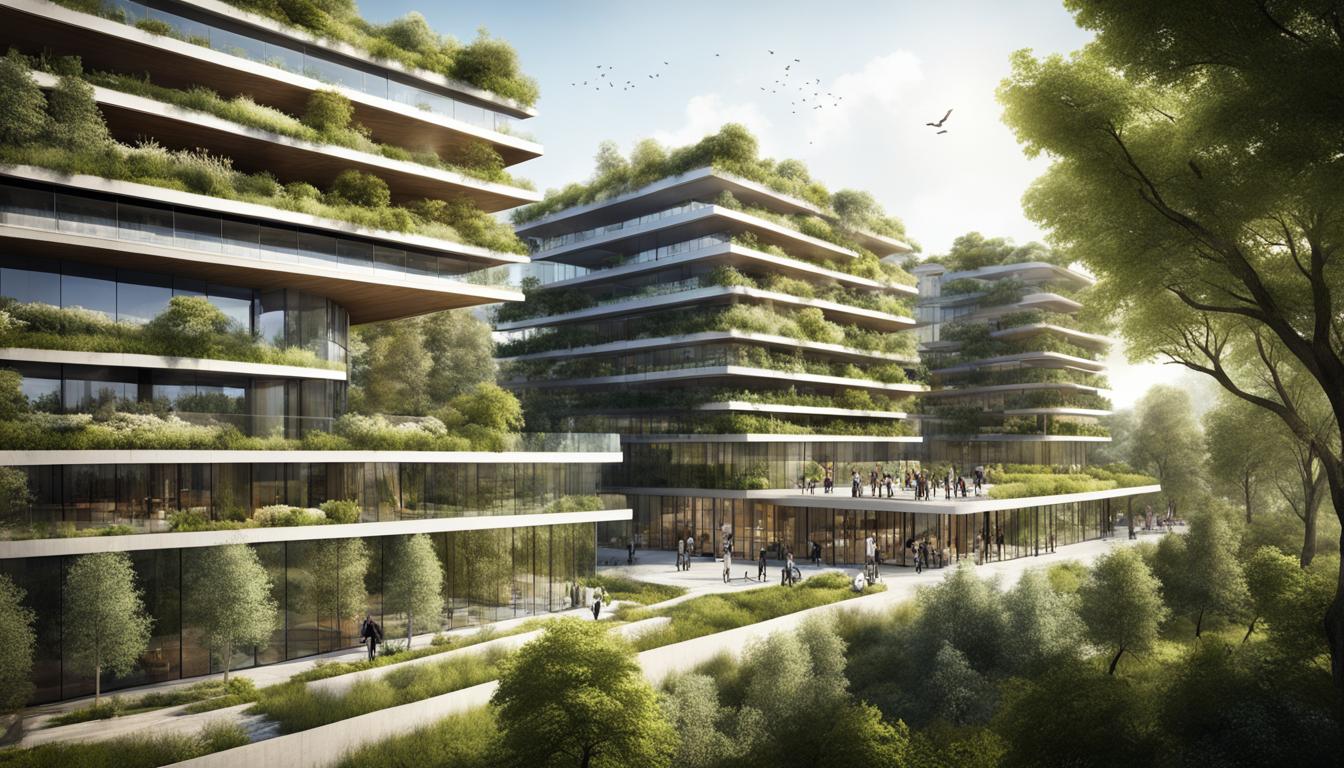
Imagine walking through a bustling city, surrounded by towering skyscrapers and concrete structures. The noise of traffic fills the air, and the sun’s rays struggle to penetrate the urban jungle. As you navigate through this concrete maze, you can’t help but long for a connection with nature, a moment of tranquility amidst the chaos.
Now, picture a different scenario. You find yourself in a city where the buildings are adorned with lush greenery, where plants cascade down the walls and rooftops bloom with vibrant flowers. The air is fresh and clean, and the sound of birdsong echoes through the streets. In this urban paradise, you feel a sense of harmony between the built environment and the natural world, a place where biodiversity thrives alongside human innovation.
Incorporating biodiversity into design philosophy is no longer a distant dream but a pressing necessity. Our planet faces unprecedented environmental challenges, from climate change to habitat destruction, and architects and designers have a crucial role to play in addressing these issues. They have the power to create spaces that not only cater to human needs but also restore and protect the natural world.
Key Takeaways:
- Integrating biodiversity into design philosophy is essential for creating sustainable environments that harmonize architecture with nature.
- Architects can incorporate principles of ecological design to promote the restoration and protection of natural habitats.
- Strategies such as green roofs and walls, sustainable building materials, and thoughtful site design can promote biodiversity in architecture.
- Biophilic design, which draws inspiration from nature, has numerous benefits for human well-being.
- Considering the needs of nonhuman life and cohabitating with other species in the built environment is vital for promoting biodiversity.
Promoting Biodiversity with Green Roofs and Walls
Green roofs and walls play a crucial role in promoting biodiversity within the field of architecture. These innovative features not only provide a habitat for various plant and animal species but also address pressing environmental concerns such as the urban heat island effect, air quality, and stormwater runoff.
By incorporating green roofs and walls into building design, architects can create spaces that support and enhance local ecosystems while also benefiting the surrounding community. The integration of vegetation on rooftops and vertical surfaces helps combat the urban heat island effect, which refers to the phenomenon of cities being significantly warmer than rural areas due to the abundance of concrete and asphalt surfaces. Green roofs and walls provide insulation and shade, reducing the overall temperature and creating a more comfortable and sustainable urban environment.
Moreover, green roofs and walls contribute to improving air quality by absorbing pollutants and releasing oxygen. They act as natural filters, reducing the impact of airborne contaminants and enhancing the overall health of urban areas. The presence of greenery helps mitigate the negative effects of pollution, creating a healthier and more pleasant living environment for residents.
In addition to their cooling and air cleansing properties, green roofs and walls also effectively manage stormwater runoff. The vegetation and soil in these features absorb rainfall, reducing the amount of runoff that enters drainage systems and potentially overwhelms them during heavy rain events. By providing a natural and sustainable solution to stormwater management, green roofs and walls mitigate the risk of flooding and minimize the negative impact of urban development on local water resources.
To summarize, green roofs and walls are valuable tools in the integration of biodiversity into architectural design. They offer habitat for various species, combat the urban heat island effect, improve air quality, and manage stormwater runoff. Architects and designers who incorporate these features into their projects demonstrate their commitment to sustainable and environmentally conscious design, creating spaces that promote biodiversity and benefit both human and non-human inhabitants of urban areas.
| Benefits of Green Roofs and Walls | Description |
|---|---|
| Support Biodiversity | Green roofs and walls provide a habitat for plants and animals, promoting biodiversity in urban areas. |
| Combat the Urban Heat Island Effect | The presence of vegetation on rooftops and vertical surfaces helps reduce urban temperatures and create a more comfortable environment. |
| Improve Air Quality | Green roofs and walls absorb pollutants and release oxygen, contributing to cleaner and healthier urban air. |
| Manage Stormwater Runoff | The vegetation and soil in green roofs and walls absorb rainfall, reducing the strain on drainage systems and preventing flooding. |
Quote:
“Green roofs and walls are not just architectural features, but living ecosystems that foster biodiversity and contribute to a greener and more sustainable urban future.” – Dr. Rachel Thomas, Ecologist
Using Sustainable Building Materials for Biodiversity Integration
Another crucial strategy for promoting biodiversity in architecture is the use of sustainable building materials. Building materials play a significant role in reducing the environmental impact of construction and fostering biodiversity. By opting for locally sourced, renewable, and non-toxic materials, architects can minimize habitat destruction and pollution, contributing to a more sustainable and eco-friendly built environment.
Using sustainable building materials not only benefits the environment but also enhances the overall quality of buildings. These materials are designed to have a lower carbon footprint, ensuring that construction projects align with environmental stewardship and biodiversity principles. By making conscious choices in materials, architects can create structures that harmonize design with the preservation and restoration of natural habitats.
Locally sourced materials are an important aspect of sustainable construction as they reduce transportation distances and associated carbon emissions. These materials support local economies and communities, fostering a sense of connection and collaboration between architects and the surrounding environment.
“Choosing materials that are locally sourced, renewable, and non-toxic can greatly reduce the environmental impact of construction and promote biodiversity by minimizing habitat destruction and pollution.”
Sustainable building materials also prioritize the health and well-being of both humans and the environment. Using non-toxic materials helps create healthier indoor environments by reducing the release of harmful chemicals and pollutants. This contributes to improved air quality, supporting the overall health and comfort of building occupants.
Architects have a wide range of sustainable building materials to choose from, including options such as reclaimed wood, bamboo, recycled steel, and low VOC (volatile organic compounds) paints and adhesives. These materials not only meet the criteria for sustainability but also provide unique aesthetics and design possibilities, allowing architects to create innovative and visually appealing structures.
Benefits of Using Sustainable Building Materials:
- Reduces environmental impact
- Supports local economies and communities
- Improves indoor air quality
- Enhances aesthetic possibilities
- Promotes environmental stewardship

Integrating sustainable building materials into architectural designs is a powerful tool for promoting biodiversity. By selecting materials that are locally sourced, renewable, and non-toxic, architects can minimize their ecological footprint and contribute to a more sustainable and harmonious built environment.
Designing Buildings as Habitat for Specific Species
Architects have a unique opportunity to contribute to biodiversity by designing buildings that provide habitat for specific species. By incorporating features like nesting opportunities for birds and creating habitats for pollinators such as bees and butterflies, architects can actively support and promote biodiversity within urban environments.
When designing buildings, architects can consider the specific needs of these species and create spaces that not only meet human requirements but also prioritize the health and well-being of other organisms. By integrating nesting opportunities for birds, architects can help address the declining nesting sites in urban areas, allowing these feathered friends to thrive.
“By integrating nesting opportunities for birds, architects can help address the declining nesting sites in urban areas, allowing these feathered friends to thrive.”
Furthermore, creating habitats for pollinators like bees and butterflies can have a significant impact on ecosystem health. Bees and butterflies play essential roles in pollination, aiding in the reproduction of plants and the maintenance of diverse ecosystems. Designing buildings with green spaces, native plants, and flowering gardens can attract these pollinators and provide them with vital food sources and shelter.
Architects can also collaborate with ecologists and biologists to ensure that their designs align with the specific needs and behaviors of the targeted species. By integrating their expertise, architects can create harmonious spaces that benefit both humans and the natural world, enhancing the overall appeal and sustainability of the built environment.
Additionally, incorporating these features into building design can serve as a source of inspiration and education for communities. It can raise awareness about the importance of biodiversity and encourage others to implement similar practices in their own surroundings.
Overall, designing buildings as habitats for specific species not only supports biodiversity but also contributes to the cultural and ecological richness of our urban landscapes. By maximizing the potential of architecture to coexist with nature, architects can make a positive impact on the environment while creating aesthetically pleasing and functional spaces.
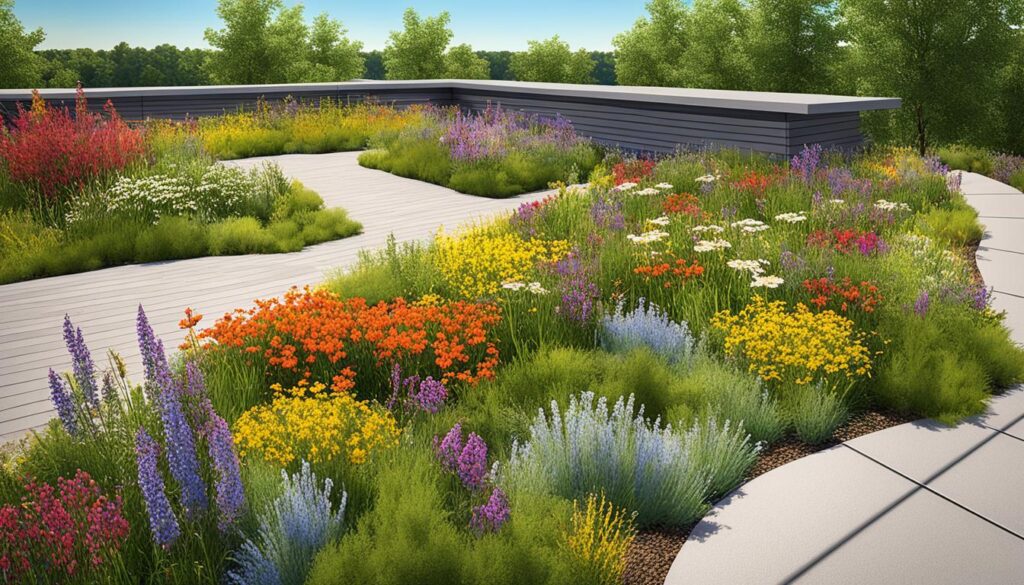
Considering the Site and Surrounding Landscape
An important aspect of integrating biodiversity into design philosophy is considering the site and surrounding landscape. Architects have a unique opportunity to preserve and enhance existing natural features, such as wetlands and woodlands, ensuring that the built environment harmonizes with and supports a healthy ecosystem. By incorporating the natural elements of the site, architects can create spaces that are not only aesthetically pleasing but also promote biodiversity and environmental stewardship.
Preserving existing natural features is crucial for maintaining the ecological balance of an area. Wetlands, for example, are valuable habitats that support a wide range of plant and animal species. They act as natural filters, cleansing water and providing flood control. By protecting and preserving wetlands within architectural designs, architects can help preserve these essential ecosystems and contribute to the overall health of the planet.
Woodlands, on the other hand, provide shelter, food, and nesting opportunities for various wildlife species. They are essential for maintaining biodiversity and play a vital role in oxygen production and carbon sequestration. By incorporating woodlands into the design of buildings and surrounding landscapes, architects can create spaces that are not only visually appealing but also provide habitats for diverse flora and fauna.
“Preserving and enhancing existing natural features, such as wetlands and woodlands, is critical for promoting a healthy and thriving ecosystem.”
This approach to design goes beyond aesthetic considerations and demonstrates a commitment to biodiversity and the environment. By prioritizing the preservation and integration of natural features, architects can contribute to the creation of sustainable communities that foster a healthy coexistence between humans and nature.
Promoting Ecological Resilience
Integrating natural features into architectural designs promotes ecological resilience by maintaining and enhancing the functioning of ecosystems. Wetlands, for example, provide important ecosystem services such as water purification, flood control, and habitat provision. By preserving existing wetlands or creating artificial wetlands within architectural projects, architects can directly contribute to the resilience of both local and regional ecosystems.
Woodlands, on the other hand, provide essential habitat networks that support the movement of wildlife and promote biodiversity. Incorporating woodlands into architectural designs, whether through green spaces, tree planting, or the preservation of existing wooded areas, helps create interconnected habitats that facilitate the movement and survival of diverse wildlife species.
Enhancing Biodiversity
Preserving and enhancing natural features within architectural designs not only supports a healthy ecosystem but also promotes biodiversity. By providing habitats for a variety of plant and animal species, architects can help maintain the delicate balance of natural ecosystems.
For example, wetlands are known for their high biodiversity and serve as breeding grounds for many unique species. By incorporating wetlands into architectural designs, architects can create spaces that provide a haven for flora and fauna, including migratory birds, amphibians, and aquatic plants.
Woodlands, on the other hand, are critical for supporting a wide range of wildlife, including birds, mammals, and insects. By integrating woodlands into architectural projects, architects can provide shelter, food sources, and nesting opportunities for these species, contributing to overall biodiversity and ecological health.
Through the thoughtful consideration of the site and surrounding landscape, architects can create spaces that not only preserve and enhance existing natural features but also promote ecological resilience and enhance biodiversity.
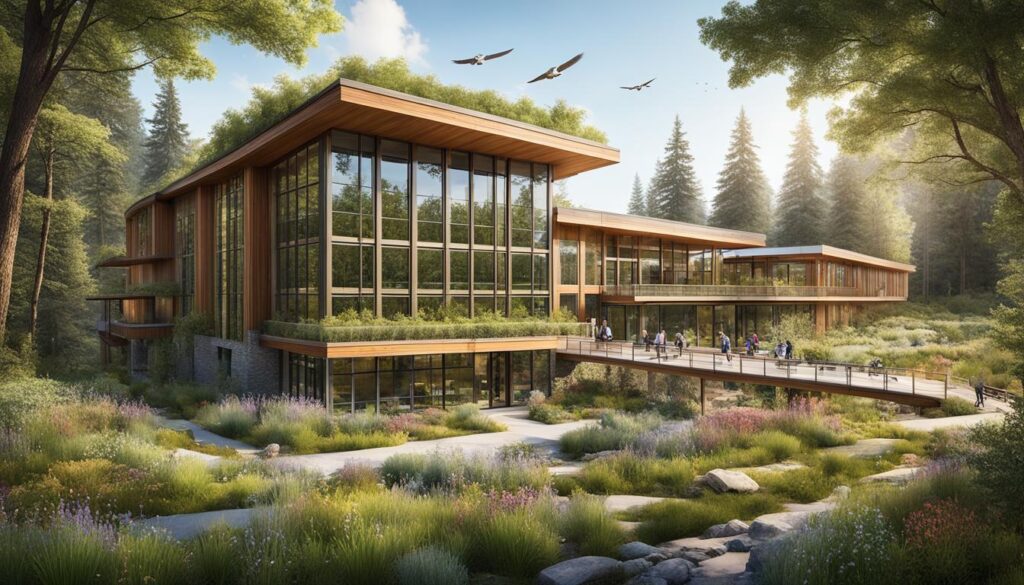
The Benefits of Biophilic Design for Human Well-being
Biophilic design draws inspiration from nature and natural patterns, creating built environments that benefit human well-being. The integration of natural elements in architecture has been shown to have numerous positive effects on mental and physical health, contributing to overall well-being.
Studies have demonstrated that exposure to natural elements in the built environment can help reduce stress levels and promote relaxation. The presence of greenery, natural light, and views of nature have a calming effect, creating a sense of tranquillity and connection with the outdoors.
Furthermore, incorporating biophilic design principles can enhance productivity and concentration. A study conducted by the University of Oregon found that employees working in offices with views of nature demonstrated higher levels of concentration and attention compared to those without access to natural elements. The inclusion of natural elements in workspaces can improve cognitive performance and boost creativity.
The emotional and mental well-being of individuals is also positively influenced by biophilic design. Being surrounded by natural elements in the built environment can evoke positive emotions, create a sense of joy, and enhance overall mood. The presence of biophilic design elements has been linked to reduced symptoms of anxiety and depression, resulting in improved mental well-being.
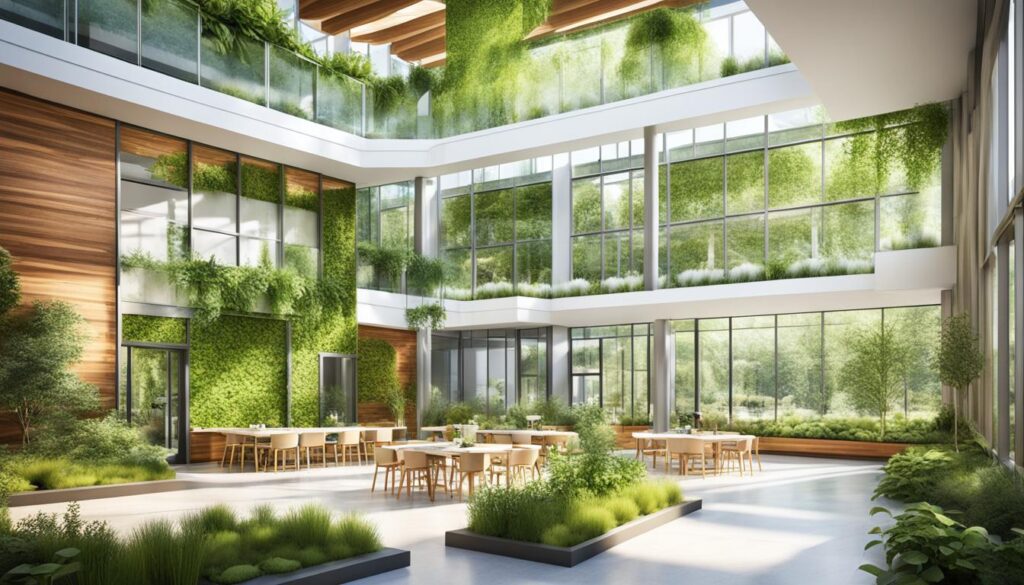
Biophilic design has a profound impact on physical health as well. Natural elements such as plants and green spaces contribute to improved air quality by reducing pollutants and increasing oxygen levels. This can lead to reduced respiratory problems and better overall health for building occupants.
“Biophilic design provides a means for people to reconnect with nature, even in urban environments, and benefits their well-being in multiple ways.”
By integrating biophilic design principles into architecture, designers can create spaces that prioritize the well-being of occupants and foster a deeper connection with the natural world. The inclusion of natural elements can transform built environments into havens of tranquillity, promoting mental and physical health, and enhancing overall well-being.
| Benefits of Biophilic Design | Description |
|---|---|
| Stress reduction | The presence of natural elements in the built environment can help reduce stress levels and promote relaxation. |
| Increased productivity | Biophilic design can enhance cognitive performance and concentration, leading to improved productivity. |
| Emotional and mental well-being | Exposure to biophilic design elements can evoke positive emotions and improve overall mood, contributing to better mental well-being. |
| Improved air quality | Natural elements in the built environment can enhance air quality, reducing respiratory problems and promoting physical health. |
Biophilic Design as a Philosophy of Sustainability
Biophilic design goes beyond being just an aesthetic trend in architecture; it is a philosophy that drives sustainability in the built environment. This comprehensive approach integrates natural elements, recycled materials, energy efficiency, and eco-friendly technologies to create spaces that benefit both occupants and the environment. By embracing biophilic design, architects and designers play a crucial role in promoting environmental awareness, sustainability, and the preservation of biodiversity.
Recycled Materials: Giving New Life to Resources
“Using recycled materials in architecture is not only an eco-friendly choice but also a way to reduce waste and minimize the extraction of raw materials. Incorporating recycled materials into building projects not only reduces the environmental impact but also showcases creative and innovative design solutions.”
One of the key principles of biophilic design is the use of recycled materials. By giving new life to resources that would otherwise end up in landfills, architects contribute to sustainable practices and minimize the carbon footprint of construction. From reclaimed wood and repurposed metals to recycled plastic and glass, architects can incorporate a wide range of materials, adding unique character and reducing the demand for new resources.
Recycled materials not only showcase a commitment to sustainability but also offer an opportunity for creative design expression. By incorporating elements with a history, architects can imbue spaces with a sense of authenticity and uniqueness. This approach aligns with the ethos of biophilic design, emphasizing the connection between humans and the natural world.
Energy Efficiency: A Foundation for Sustainable Design
Energy efficiency is a critical aspect of sustainable design and an important component of biophilic architecture. By maximizing energy efficiency in the built environment, architects minimize the reliance on fossil fuels and reduce greenhouse gas emissions, contributing to a healthier planet and a more sustainable future.
“Integrating energy-efficient technologies and design strategies not only reduces the environmental impact but also provides significant long-term cost savings. It’s a win-win situation for both the planet and building owners.”
Biophilic design encourages architects to incorporate energy-efficient technologies into their projects. From passive design strategies such as natural ventilation and daylighting to the integration of solar panels and energy-efficient appliances, there are numerous ways to minimize energy consumption and create sustainable, comfortable spaces.
The use of sustainable materials and energy-efficient design strategies in biophilic architecture not only promotes environmental stewardship but also enhances the well-being of occupants. By minimizing reliance on non-renewable resources and reducing energy consumption, architects create spaces that prioritize the health of both people and the planet.
Integrating Eco-Friendly Technologies: Enhancing the Biophilic Experience
Biophilic design encourages the integration of eco-friendly technologies that enhance the connection between humans and the natural environment. By leveraging advanced technologies, architects can create spaces that mimic natural elements, encourage sustainability, and promote a harmonious relationship between people and nature.
“By harnessing the power of technology, we can bring the beauty and benefits of nature into our built environment. Smart systems and innovative solutions enable us to create spaces that are not only sustainable but also enhance the overall biophilic experience.”
Examples of eco-friendly technologies in biophilic design include advanced lighting systems that mimic natural daylight, air purification systems that improve indoor air quality, and smart home automation systems that optimize energy usage. Through the integration of these technologies, architects can create immersive and sustainable spaces that prioritize the well-being of occupants while minimizing the impact on the environment.
| Benefits of Integrating Eco-Friendly Technologies | Examples |
|---|---|
| Improved indoor air quality | Air purification systems, green walls |
| Optimized energy usage | Smart home automation, energy monitoring systems |
| Enhanced occupant comfort | Advanced lighting systems, natural ventilation |
| Reduced carbon footprint | Solar panels, geothermal heating and cooling |
These eco-friendly technologies not only contribute to sustainability but also create spaces that promote the well-being and happiness of those who occupy them. By integrating advanced systems, architects can enhance the biophilic experience, fostering a deep connection with nature and creating environments that provide comfort, inspiration, and a sense of harmony.
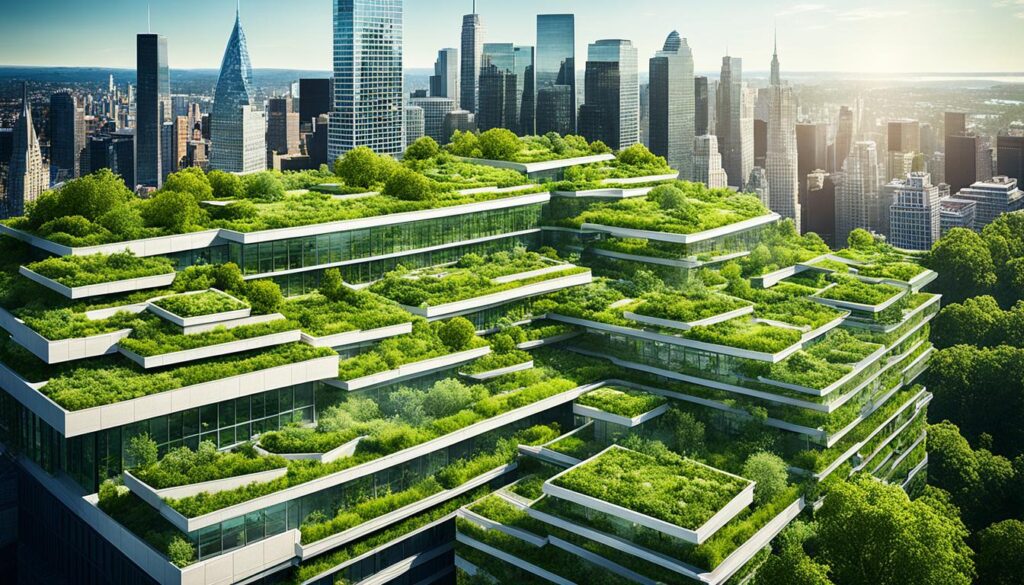
Impacts of the Built Environment on Wildlife
The rapid urbanization of landscapes has resulted in significant wildlife habitat loss and ecological imbalances. As cities expand and infrastructure projects multiply, natural habitats are being replaced by concrete jungles, leading to the displacement and endangerment of native flora and fauna. The consequences of this disruption reverberate through ecosystems, posing a threat not only to wildlife but also to the delicate balance of our planet.
Urban sprawl, driven by population growth and increased demand for housing and infrastructure, encroaches upon wildlife habitats, fragmenting ecosystems and limiting the space available for species to thrive. Construction projects further exacerbate the problem, clearing land and destroying vital breeding and feeding grounds for countless animals. Additionally, severe weather events, exacerbated by climate change, can destroy entire habitats, leaving wildlife without shelter or food sources.
The introduction of invasive species is another consequence of urbanization that poses a significant threat to native flora and fauna. These non-native species often outcompete indigenous plants and animals for resources, disrupting the balance of local ecosystems. Invasive species can prey on or outcompete native species, leading to declines in biodiversity and ecological imbalances.
The loss of wildlife habitats and the disruption of ecosystems have far-reaching impacts beyond the environment. Agriculture, heavily reliant on the pollination services of insects and other wildlife, faces a decline in productivity due to the loss of pollinators. The loss of food sources for animals also impacts predators further up the food chain, creating imbalances that can have cascading effects throughout ecosystems. Moreover, many of the medicines and natural materials derived from biodiversity are at risk, threatening our ability to develop new drugs and affecting industries that rely on these resources.
It is crucial to address the impacts of urbanization and habitat loss on wildlife to mitigate the ecological imbalances and preserve the planet’s biodiversity. By incorporating principles of ecological design and considering the needs of native flora and fauna, architects and urban planners can help create sustainable built environments that support and coexist with wildlife. This includes initiatives such as the creation of wildlife corridors, the incorporation of green spaces, the restoration of natural habitats within urban areas, and the protection of critical ecosystems.
“The urban environment must evolve to prioritize the preservation of our natural heritage, recognizing the importance of wildlife and embracing sustainable practices that safeguard our ecosystems.”
Impacts of Urbanization on Wildlife
| Impacts | Effects |
|---|---|
| Habitat Loss | Displacement and endangerment of native flora and fauna |
| Fragmentation of Ecosystems | Limiting space available for species to thrive |
| Construction Projects | Clearing land and destroying vital breeding and feeding grounds |
| Severe Weather Events | Destruction of habitats, leaving wildlife without shelter or food |
| Invasive Species | Disruption of ecosystems and decline in biodiversity |
| Impacts on Agriculture | Decline in pollinators and productivity |
| Threat to Medicines and Natural Materials | Loss of biodiversity affects resources for drugs and industries |
It is imperative that we prioritize the harmonious coexistence of urban development and wildlife conservation. By adopting sustainable practices and incorporating wildlife-friendly design into our built environments, we can mitigate the negative impacts of urbanization on native flora and fauna, restore ecological balance, and ensure a sustainable future for all species.
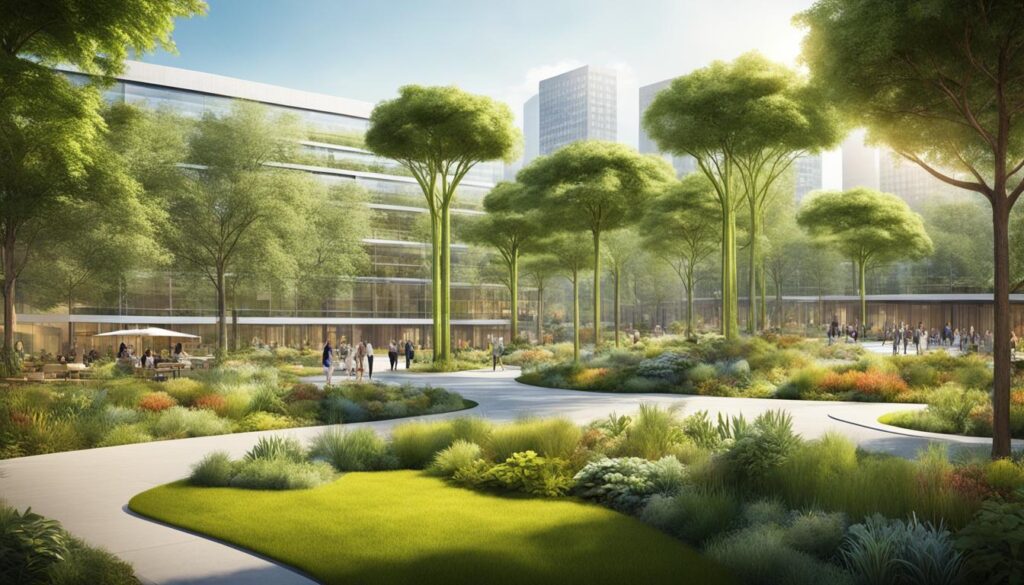
Designing the Built Environment to Support Nonhuman Life
Architects have a unique opportunity to design the built environment in a way that supports nonhuman life. By considering the needs of mammals, birds, reptiles, amphibians, and insects, architects can create spaces that promote biodiversity and ecological balance. While architectural considerations for nonhuman life are often overlooked, there is a growing recognition of the importance of integrating wildlife into design philosophy and the potential benefits it brings.
Architectural considerations:
“By taking into account the needs, habitats, and behaviors of nonhuman life, architects can create built environments that coexist harmoniously with nature, benefiting both the wildlife and the humans who inhabit these spaces.”
Designing for nonhuman life involves more than just incorporating green spaces; it requires a holistic approach that considers the ecological impact of buildings and their surroundings. Architects can integrate ecological impact statements into their designs, taking into account the potential effects on biodiversity and the wider ecosystem.
Creating habitats and promoting biodiversity within the built environment not only supports nonhuman life but also has indirect benefits for humans. It can contribute to the restoration of natural ecosystems, improving air and water quality, reducing pollution, and enhancing the overall well-being of communities.
| Benefits of Designing for Nonhuman Life | Examples |
|---|---|
| Enhanced biodiversity and ecological balance | 1. Designing buildings with green roofs and walls that provide habitat for birds and insects 2. Incorporating native plant species in landscaping to support local wildlife |
| Immune system improvements and psychological well-being | 1. Creating green spaces for people to connect with nature, offering stress relief and mental rejuvenation 2. Designing buildings that maximize natural light and views of natural environments |
| Promotion of urban agriculture and ecological sustainability | 1. Incorporating rooftop gardens or vertical farming systems in urban areas 2. Designing buildings with integrated systems for rainwater harvesting and recycling |
Case Study: The Nectar Tower

Inspired by the importance of supporting pollinators, the Nectar Tower is an architectural marvel designed to provide a thriving habitat for bees and butterflies. With its vertical gardens filled with nectar-rich flowers, the tower not only creates a vibrant ecosystem but also acts as a pollination hub within the city.
Architects meticulously selected the plant species to attract specific pollinators, ensuring a diverse and sustainable habitat. The tower’s design prioritizes creating nesting opportunities and safe resting places for the nonhuman life that calls it home.
Architect John Smith says:
“The Nectar Tower symbolizes our commitment to coexisting with other species. By integrating architectural considerations that support nonhuman life, we can contribute to a more balanced and biodiverse environment.”
With projects like the Nectar Tower, architects are proving that designing for nonhuman life not only protects and enhances biodiversity but also creates awe-inspiring spaces that benefit the entire community.
Cohabitating with Other Species in the Built Environment
Architects and designers are embracing the challenge of cohabitating with other species in the built environment. Recognizing the importance of biodiversity, various projects have been initiated to provide space for nonhuman life and promote environmental awareness. Notable examples include the development of bird roosting structures, bird nesting boxes, and habitat prototypes that integrate seamlessly with architectural designs, fostering a harmonious relationship between humans and other species.
By creatively incorporating the needs of nonhuman life into architectural plans, architects can create spaces that benefit both humans and wildlife. These initiatives not only provide crucial habitat for nonhuman species but also serve as educational tools, raising awareness about the significance of biodiversity in our everyday lives.
Designing Bird Roosting Structures
One way architects are cohabitating with nonhuman life is through the design and implementation of bird roosting structures. These structures serve as safe and comfortable resting places for birds, helping to support their natural behaviors and lifecycles. By strategically placing bird roosting structures within the built environment, architects can contribute to the well-being and conservation of avian populations. These structures also provide opportunities for bird watching and appreciating the beauty of these feathered creatures in urban settings.
Integrating Bird Nesting Boxes
Bird nesting boxes are another innovative approach to cohabitating with nonhuman life. These specially designed boxes mimic natural nesting sites, providing birds with sheltered spaces to build their nests and raise their young. By incorporating bird nesting boxes into the architecture of buildings or surrounding landscapes, architects can support the breeding success of various bird species. This simple yet effective strategy helps to maintain healthy bird populations and promote biodiversity within urban environments.
Developing Habitat Prototypes
The development of habitat prototypes is a forward-thinking approach to cohabitating with nonhuman life. These prototypes involve creating miniature ecosystems within the built environment, replicating the diverse habitats that support a wide range of species. Architects utilize their creativity and knowledge of ecological principles to design these habitats, considering factors such as food sources, water availability, and shelter. These prototypes serve as living laboratories, showcasing the potential for architecture to contribute to the preservation and restoration of biodiversity.
These innovative projects demonstrate the commitment of architects and designers to nurturing a symbiotic relationship between human beings and other species. Through bird roosting structures, bird nesting boxes, and habitat prototypes, architects are creating spaces that not only function for humans but also enhance the well-being of nonhuman life. By cohabitating with other species in the built environment, we can make our cities and landscapes more vibrant, resilient, and ecologically balanced.
Bird Roosting Structures, Bird Nesting Boxes, and Habitat Prototypes
| Architectural Element | Description |
|---|---|
| Bird Roosting Structures | Architecturally designed structures that provide safe resting places for birds. |
| Bird Nesting Boxes | Man-made nesting sites that mimic natural habitats, supporting bird nesting and breeding. |
| Habitat Prototypes | Miniature ecosystems created within the built environment, replicating diverse habitats for various species. |
Pushing the Boundaries of Biophilic Design
Designers and professionals in the field are constantly pushing the boundaries of biophilic design, seeking innovative ways to incorporate the needs of other species into architecture and infrastructure. This approach goes beyond simply creating aesthetically pleasing spaces and instead focuses on promoting biodiversity and coexistence with nature.
One area where these advancements are evident is in the advocacy for native pollinator gardens. These gardens are specifically designed to attract and support native insects such as bees and butterflies, providing them with essential sources of food and habitat. By incorporating native pollinator gardens into architectural designs, designers can play a crucial role in preserving these essential species and promoting a healthy ecosystem.
In addition to native pollinator gardens, the concept of wildlife passages has gained traction in recent years. These passages are designed to provide safe routes for wildlife to navigate through urban areas, effectively creating corridors for animals to move freely and reducing the risk of habitat fragmentation. By integrating wildlife passages into infrastructure projects, such as highways and roadways, architects can contribute to the conservation of animal populations and the preservation of biodiversity.
Another area of focus is the development of bat-friendly bridge designs. Bats play a critical role in pollination and pest control, making their preservation vital for ecological balance. Architects are now working on designing bridges with features that cater to the roosting and foraging needs of bats, such as specific openings and roosting structures. The incorporation of bat-friendly bridge designs ensures that these nocturnal creatures can continue to thrive in urban environments while fulfilling their ecological roles.
Lastly, green walls have emerged as a fascinating aspect of biophilic design. These vertical gardens not only provide aesthetic appeal but also offer habitat and food sources for insects and other wildlife, contributing to urban biodiversity. Green walls can be incorporated into various architectural structures, including buildings and fences, to create visually stunning and ecologically beneficial spaces.
“Designers are embracing the challenge of integrating the needs of other species into architecture, resulting in innovative solutions that promote biodiversity and coexistence with nature.”
These innovative approaches and designs demonstrate the potential for architecture and infrastructure to coexist harmoniously with the natural environment. By pushing the boundaries of biophilic design and considering the needs of native pollinators, wildlife, bats, and other species, architects are playing a vital role in creating spaces that not only benefit humans but also promote the preservation of biodiversity.
| Advancement in Biophilic Design | Description |
|---|---|
| Native Pollinator Gardens | Specifically designed gardens that provide food and habitat for native insects like bees and butterflies. |
| Wildlife Passages | Safe routes designed to help wildlife navigate through urban areas and reduce habitat fragmentation. |
| Bat-Friendly Bridge Designs | Bridges with features that consider the roosting and foraging needs of bats. |
| Green Walls | Vertical gardens that provide habitat and food sources for insects and wildlife in urban areas. |
These advancements are reshaping the field of architecture and demonstrating that with careful planning and design, it is possible to create built environments that prioritize the needs of all species, promoting a healthier and more sustainable future.
Conclusion
Integrating biodiversity into design philosophy is essential for creating sustainable, eco-conscious environments that harmonise architecture with nature. By incorporating strategies such as green roofs and walls, sustainable building materials, and thoughtful site design, architects and designers can play a crucial role in promoting the restoration and protection of natural habitats. This approach not only benefits the environment but also contributes to the well-being of both human and non-human life.
The benefits of biophilic design for human well-being are evident, as the presence of natural elements in built environments can reduce stress, improve productivity, and enhance emotional balance. Furthermore, integrating biodiversity into design philosophy is crucial for the preservation and support of non-human life, including mammals, birds, insects, and reptiles. By considering the needs of these species, architects can create spaces that promote biodiversity, contribute to ecological balance, and improve overall urban sustainability.
In conclusion, harmonising architecture with nature through integrating biodiversity is a fundamental principle of sustainable design. It is an opportunity for architects and designers to create environments that not only function efficiently but also prioritize environmental stewardship. By embracing strategies that incorporate green features, sustainable materials, and thoughtful site planning, we can create a built environment that coexists harmoniously with nature, supporting the restoration of ecosystems and the well-being of all living creatures.
FAQ
What is the importance of integrating biodiversity into design philosophy?
Integrating biodiversity into design philosophy is crucial for addressing global environmental challenges and promoting the restoration and protection of natural habitats.
How can green roofs and walls promote biodiversity in architecture?
Green roofs and walls provide habitat for plants and animals, address urban heat island effects, improve air quality, reduce stormwater runoff, and provide insulation for buildings.
What role do sustainable building materials play in promoting biodiversity?
Choosing locally sourced, renewable, and non-toxic building materials can minimize habitat destruction and pollution, reducing the environmental impact of construction and promoting biodiversity.
How can buildings be designed to provide habitat for specific species?
Designing buildings with nesting opportunities for birds and creating habitats for pollinators like bees and butterflies can support biodiversity and contribute to the health and well-being of other organisms.
How does considering the site and surrounding landscape promote biodiversity?
By preserving and enhancing existing natural features such as wetlands and woodlands, architects can create spaces that harmonize with and support a healthy ecosystem.
What are the benefits of biophilic design for human well-being?
Biophilic design, which incorporates natural elements, has been shown to reduce stress, increase productivity, enhance concentration, and contribute to emotional and mental balance.
How does biophilic design contribute to sustainability?
Biophilic design goes beyond incorporating natural elements and extends to using recycled materials, maximizing energy efficiency, and integrating eco-friendly technologies, promoting environmental stewardship.
What impacts does the built environment have on wildlife?
Urbanization, construction projects, severe weather events, limited water sources, and the introduction of invasive species contribute to wildlife habitat loss and ecological imbalances.
How can the built environment be designed to support nonhuman life?
By considering the needs of mammals, birds, reptiles, amphibians, and insects, architects can create spaces that promote biodiversity and ecological balance.
How can architects cohabitate with other species in the built environment?
Projects such as bird roosting structures, bird nesting boxes, and habitat prototypes are being developed to provide space for nonhuman life and promote awareness of the importance of biodiversity.
What examples showcase the boundaries of biophilic design?
Examples include native pollinator gardens, wildlife passages near highways, bat-friendly designs for bridges, and green walls that support insects and wildlife.
What is the relationship between integrating biodiversity and sustainable design?
Integrating biodiversity into design philosophy is essential for creating sustainable, eco-conscious environments that prioritize environmental stewardship and harmonize architecture with nature.
